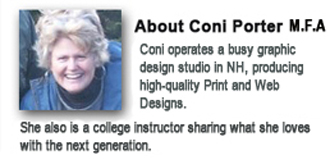Cross-media marketing campaigns and the role graphic design plays
Cross-media marketing campaigns, and how to get the most from them
 As you no doubt have noticed, marketing is taking on more and more forms these days, from the traditional to the electronic. What is a marketer to do? Do everything in your power to ensure that your company’s graphic design remains consistent and arresting across all sales channels. That goes for social media, a medium that’s quickly becoming a popular way for businesses to market their products and services. But as popular as social media has become, getting your message across with this growing medium is no slam-dunk.
As you no doubt have noticed, marketing is taking on more and more forms these days, from the traditional to the electronic. What is a marketer to do? Do everything in your power to ensure that your company’s graphic design remains consistent and arresting across all sales channels. That goes for social media, a medium that’s quickly becoming a popular way for businesses to market their products and services. But as popular as social media has become, getting your message across with this growing medium is no slam-dunk.
Social media is “trending” like crazy; don’t let it drive you nuts
As social media proliferates, consumers are exposed to a deluge of “Likes”, Tweets, messages and texts over the Internet or on their mobile devices. The consumer has always been known to have a short attention span, but today, with information traveling at breakneck speeds and images appearing and disappearing in less than a nano-second, the ability to stop, look, read and contemplate is nearly impossible. Now add to that the substantially smaller screens on most of today’s popular mobile devices, and it’s easy to understand why getting your message viewed and recalled is so challenging.
How to get your message across in cross-media marketing campaigns
 With Tweets as short as can be and text messages not much longer, consistent and arresting graphic design is key if you hope to grab the attention of consumers. In fact, it’s been shown that consumers respond best to an initial message when it includes an exciting or attention-grabbing graphic image. In addition, when a graphic image is used consistently over time, as well as over multiple social media channels such as LinkedIn, Facebook, Google+ and Twitter, customers have the opportunity to view it again and again, which helps to create more brand recognition for the company sending out messages.
With Tweets as short as can be and text messages not much longer, consistent and arresting graphic design is key if you hope to grab the attention of consumers. In fact, it’s been shown that consumers respond best to an initial message when it includes an exciting or attention-grabbing graphic image. In addition, when a graphic image is used consistently over time, as well as over multiple social media channels such as LinkedIn, Facebook, Google+ and Twitter, customers have the opportunity to view it again and again, which helps to create more brand recognition for the company sending out messages.
Graphic design helps how people see you
Graphic design can also play a major role in how your product or service is perceived by social media users. Having consistent and arresting graphic design helps to fortify your brand, build trust with the consumer, and give your business the appearance of being larger than it actually is. Better yet, a strong graphic image may even prompt social media users to post links on their own social media pages, which directs others back to your company’s main website. Under ideal circumstances, this could start a viral campaign that gets your company noticed far and wide.
Read what a noted graphic designer and educator has to say—
QUESTION:
What challenges do you face when designing for Social media?
Truthfully, designing for the web is a challenging experience for me as a well-seasoned print designer.
Of course I am working more closely with cross media marketing efforts in today’s market, but my history in the visual design field is entrenched in having complete control over the design, including the exact colors of reproduction when I approve hard-copy press proofs. Of course the compositional elements and principles of design remain the same, but designing for a non-static page (one in which these same elements slide right, left, up and down depending on the display device, not to mention the shift in color gamut that occurs on each device) presents a real challenge to me. I want the integrity of my designs to remain constant where ever, and however, they appear.
This new creative process means that I must create successful work and then “let it go” as it speeds across cyberspace – hopefully retaining some of my original intent as it morphs into all the different sizes and proportions needed for social media applications. It drives me crazy sometimes to see so much image distortion – especially images of people. In print design, and in the classes I teach, I am clear that image distortion is NOT ok… and yet, it happens all the time on the web.
Part of the reason for this, I think, is because templates for sites like Facebook, Twitter, Google+, and YouTube frequently change to reflect the availability of new sizes and higher resolutions. That’s great, but it means that as these changes happen – the images and the designs automatically distort. At one point recently, I found four separate dimensions for use on Twitter, including some old and new information from Twitter itself. Every designer seems to have their own opinion about how to design effectively for these sites, and I’m starting to form my own opinions based on what I have found hasn’t worked well. “Trial and error” seems to be the method we designers are all working with!
QUESTION:
What do you want to accomplish when designing the graphics of a company’s social media campaign?
Primarily, I want to retain the essence of the company’s brand design so a consistent experience is offered to the viewer whether they are online or holding a marketing piece in their hands. This is essential for a cross-media marketing campaign to be most effective. If the viewer sees different elements and a completely new composition each time the company touches them – there is no visual follow-through and the overall experience is compromised. That said, it is also important to create a bit of contrast between the social media components – so the repeated experience doesn’t become redundant and tiresome. That’s where a designer finds their place in the process – knowing how to create that balance.
QUESTION:
How do you want the graphics you designed for the social media campaign to work with the rest of the company’s marketing efforts, specifically the website?
Spending time to analyze the elements and principles of a specific design is essential for brand recognition. Which colors, images, and typography define this visual statement? Which are secondary – and interchangeable? Whether you start with the company’s identity design, printed piece, or website – retaining the essential pieces of a brand design, and in their fundamental relationship to each other, will hold that “look” through many separate applications as the designer reformats the design to fit into the many, and changing, digital spaces required by today’s social media interfaces. You know you’ve been successful when your designs appear as you intend them to be (or reasonably close) across platforms, printed project pieces, and web applications. If they don’t – redesign and try again!
 Let’s connect
Let’s connect
If you’d like to learn more about how we think here at Ferrante & Associates, subscribe to our blogs or our monthly Newsletter Ferrante Speaks. You may also follow us on Twitter, Google+ or Facebook.
Don’t miss out: Subscribe and receive regular updates delivered automatically via a web portal, newsreader or email.








